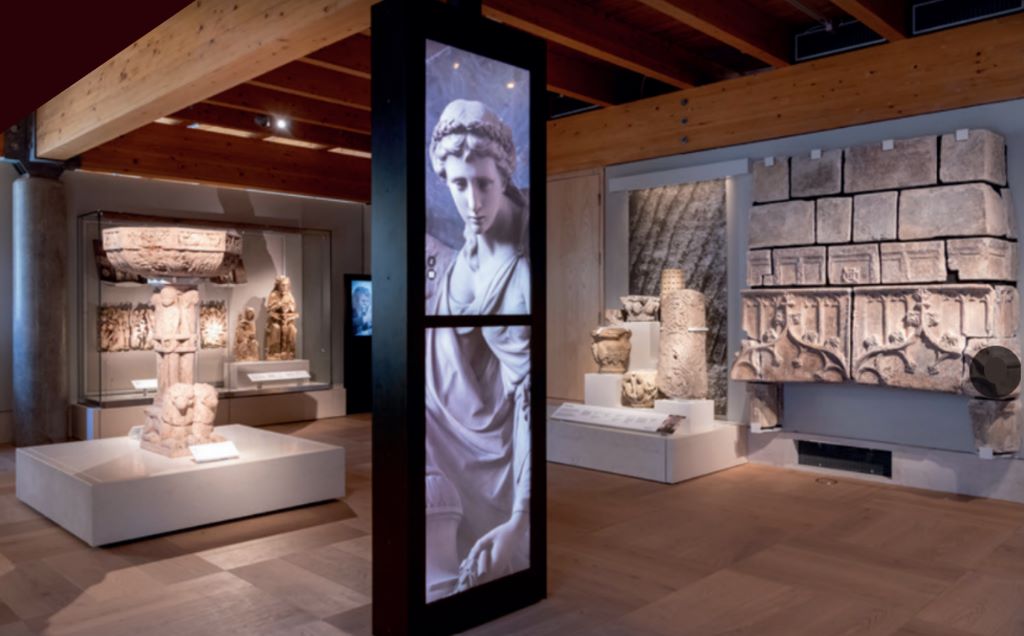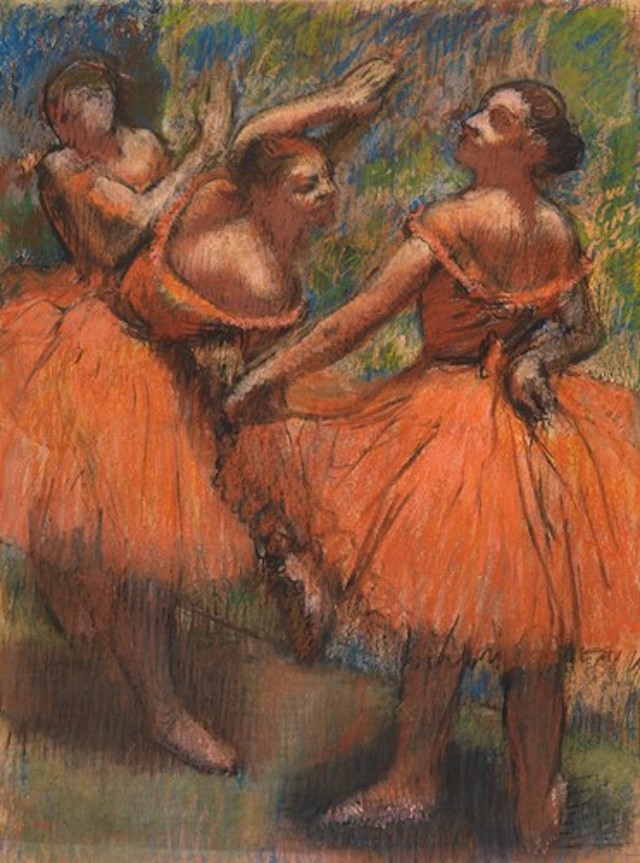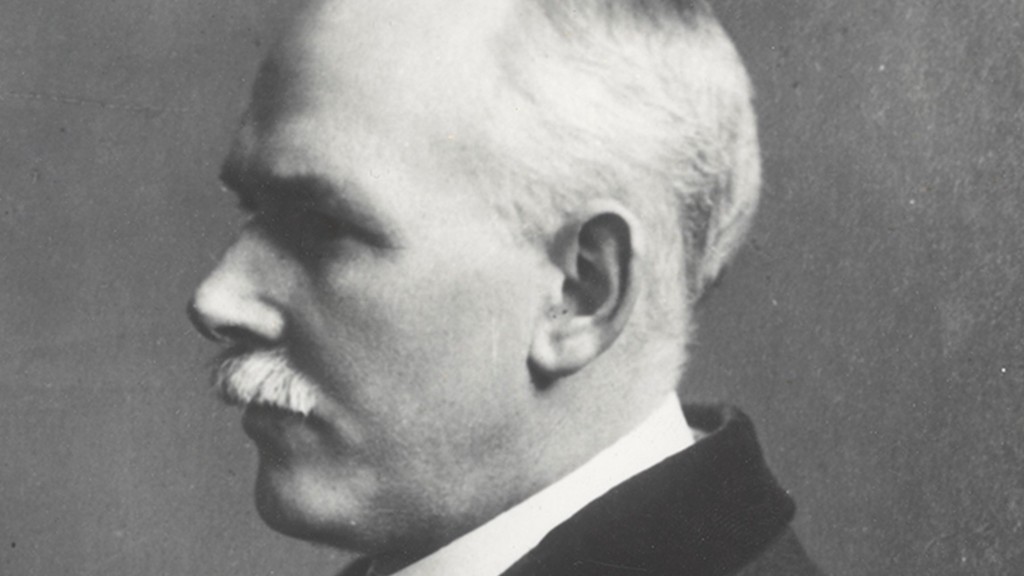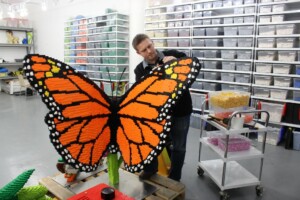Glasgow’s Burrell Collection has been named the 2023 Museum of the Year, with judges hailing it as a ‘world-class treasure trove of objects’.
The institution reopened in 2022 after a major renovation. It has been described as ‘extraordinary’ as it takes the £120,000 prize, the largest museum award in the world, topping a shortlist of five UK museums. The artist Sir Grayson Perry presented the award to Duncan Dornan, the head of museums and collections for Glasgow Life, the charity that manages the collection, at a ceremony at the British Museum.
The Burrell Collection has been called ‘one of the most remarkable assemblages of works of art ever brought together by one man’ and ‘one of the greatest gifts ever made to any city in the world’. Sir William Burrell and Lady Constance Burrell committed to giving Glasgow about 6,000 objects in 1944. They kept collecting until Sir William died, so the number rose closer to 9,000 objects. There have been further additions since his death, as a trust he established continues to support new purchases.
Burrell focused mainly on northern European medieval and renaissance art, Chinese art, Islamic art, contemporary European painting and antiquities. The collection features, among other treasures, late Gothic and early Renaissance art from northern Europe. It also includes one of the most important collections of tapestries and stained glass.
The building itself is of outstanding architectural significance and is considered to be one of the finest public buildings of the late 20th century.
The origins of the Burrell Collection
“William Burrell was, in some respects, that classic Victorian industrialist and collector,” Duncan Dornan told blooloop:
“He made money from the enormous explosion in trade and industry which occurred in the 19th and 20th centuries. He was an interesting character in that he studied very carefully before acquiring pieces. By identifying the most interesting and the very best objects, he was competing with enormously wealthy people, whereas Burrell was merely wealthy. He had to work hard to acquire the quality of collection he did.
“He was competing with Hearst and people who had astonishing amounts of money.”
William Randolph Hearst, an influential force in American journalism was, among other things, a voracious collector. An obituary estimated that Hearst alone had accounted for 25 percent of the world’s art market during the 1920s and ’30s.
“Burrell bought some architectural fragments from the Hearst estate. He apparently used to boast that he’d paid less for them than Hearst had spent insuring them.
“Historically there was a perception that he relied on dealers and maybe didn’t fully understand what he was acquiring. But from fresh research we’ve done, particularly working with Burrell’s library, which we hold, we were able to spot his research through the margins of the books and could see his thinking evolve.
“We know now that he did work very hard to develop the collection. This explains why he was able to get such internationally significant objects. It was by hard work and very shrewd, carefully considered acquisition.”
The life of a collector
Burrell educated himself over a lifetime:
“His first acquisition was as a teenager, and, at the time, quite controversial,” Dornan says. “His father thought he would’ve been better to buy a cricket bat than his first work of art. He sold his last directly operated business interest in 1916. From then right through to 1958 he was focusing very heavily on collection.
“He has involvement in other things and was active in civic society. But he was spending a large amount of time collecting.”
One aspect that is important to understand, Dornan stresses, is that the collection was the work of both William Burrell and his wife, Lady Constance:
“It’s a personal collection; its balance and the areas covered reflect personal interests. It is not approached in the way a museum would approach things, where we would look for comprehensive coverage and limited representation in each area. These were private collections and show an evolution in taste and understanding.”
Visually, it is a stunning collection, comprising over 9,000 beautiful objects and artworks from three continents, covering 6,000 years.
“One of the greatest changes as a result of the refurbishment is the control of natural lighting and the move to digital lighting, which can focus much more keenly on individual objects,” he says. “It has brought the collection to life and allows people fully to enjoy and experience the visual feast which is the Burrell.
“It is a very visual collection, and very powerful where it has the space to speak.”
Refurbishing the Burrell Collection
Dornan outlines the background of the project:
“The Burrell building was an ambitious design in the late seventies and early eighties. It was developed by a team of architects for whom this was the first public commission. To some extent, the ambition of the building outstripped the technical solutions available then, certainly in relation to the glazing.
“By using the best 21st-century technology, we could fully realise that ambition for the building, improving the roof system so that the building is watertight, improving the air tightness of the building so the environmental conditions are stable. We know that has been effective; we switched on the plant, and the building stabilised quickly. We have been delighted with its performance.”
The new glazing allows the team to control heat entering the building, which is important for temperature stability. They can also control heat leaving the building, which is important for environmental efficiency and the comfort of guests. Critically, it also allows the museum to control light levels to a different extent in different parts of the building.
“We can manage the light levels around objects more precisely, so we can be more relaxed in the way we display collection objects. But it also means we can take advantage of modern digital lighting. This provides low lux levels and heightens visibility. The combination of new technologies which have evolved since the 1980s means the building can now deliver the aspirations which were originally there.”
Keeping the elements that visitors love
The team has introduced necessary improvements in the technology. But they also undertook the refurbishment with a consciousness of and sensitivity to the original atmosphere of the Burrell:
“We have retained those elements which people loved,” Dornan explains. “The Burrell is still a calm building. It still has a very strong visual connection to the natural landscape around it. Physically, has that connection to the landscape because there are more entrances. At the same time, it is now much easier to find your way around. And it is much more comfortable in terms of finding orientation inside the building.
“We feel we have retained the Burrell people loved but made it much easier to live with.”
The Burrell has developed sector-leading digital content and physical interactives in-house. Dornan comments:
“The Burrell initially opened in the eighties. This was a time when museum interpretation was quite low-key, and there were relatively few interactives across any museums. Glasgow has been lucky enough to do three major museum refurbishment projects in succession. The Burrell is the third after Kelvingrove and Riverside. So, it represents a culmination of two decades of development.”
Interactives support the Burrell Collection
The Burrell’s digital interpretation provides films and physical and visual interactives, in a way that supports the collection rather than overwhelming it:
“The colour palette and the frequency of digital interpretation have been very carefully judged,” he says. “The collection is still paramount, but the digital provides alternative channels for people to be able to access information. Those are developed from an understanding of the different ways in which we all learn.”
“Some people will learn from conventional labels, some from film, some from digital labels, some by interacting. Every visitor can find some way to get into the collection to learn more, and to generate new interest and enthusiasm.”
He adds:
“We have worked closely with schools in the city to develop content that works for the curriculum. It has been quite carefully tuned to different age groups so that every age group in the school will find things in the Burrell that are aimed directly at the classroom activities that they’d be engaging in.”
Behind the scenes
Around 2,300 objects of the 9,000 in the Burrell Collection are on display:
“It’s a relatively high proportion of the collection. We have the balance in store, and we rotate it into permanent displays. We have light-sensitive works, so we have to change our routine frequently.
“Some of the collection is evidence of the insight the Burrells were developing. The collection was built over time, so we’re providing access to the stored collection in two ways. One is through a digital interactive. This explains the idea of stored collections, and what happens in museum stores, and then provides visual sight of the collection.”
As the film disappears, the glass becomes transparent and the store lights up, so visitors can see the collection stored behind the wall.
“We are also offering conducted tours of the stores, which allow groups to go in and look at elements of the collection, and to get that sense of how Burrell built his collection and how the collection evolved. The store collection gives greater insight into that concept of individuals amassing a collection, becoming increasingly familiar with the elements of the collection as they collect and consider what they have already got.
“The whole collection works hard, but in the Burrell, quite a high percentage is on display in galleries. We’ve been able to increase that by about 35%. This is quite a significant uplift for a collection of that size.”
A family affair
Burrell’s mother was interested in the arts, and it is rumoured that he inherited his love of collecting from her. Additionally, Dornan says:
“He worked with his wife more than people previously recognised, and she influenced areas of the collection. When the collection was gifted, he was at pains to say that this was a gift from them both.”
This, Dornan observes, is an aspect of the collecting process that people often overlook:
“It wasn’t just one individual who, apparently from nowhere, developed his interest. He came from a family environment where there was an interest, and he had a partner who was also interested and informed some of the collecting. This is part of a personal narrative, which is quite important in understanding what the viewer is looking at.”
Someone visiting the Burrell without knowing anything about the collection or the Burrells would still benefit from the experience, Dornan contends. The most striking thing is the beauty of the objects, and how they sit within that environment:
“That is, visually, a stunning experience. But if they scratch beneath the surface and engage with the interpretation, visitors can begin to understand the skill, the craftsmanship, and the value which was attached to these objects. That was something which Burrell was conscious of in collecting. It is a way of connecting these beautiful objects to our lived experience, so they don’t exist in isolation. They tie back into our everyday lives and the world we inhabit.”
Exploring the provenance of the Burrell Collection
Something that has been undertaken because of the refurbishment project is an exploration of the provenance of the collection.
Dornan explains:
“One of the issues for private collectors is that the whole concept of gathering provenance for objects is a relatively new creation. At the time – Burrell was collecting up to the 1950s – it was not normal for collectors to be supplied with any provenance information. Objects were predominantly coming from dealers who themselves had not collected that information.”
There is some information from Burrell himself:
“We have his purchase books, which are a useful starting point. And we are building up a much more comprehensive picture of the history of the objects, right back to their creation. The link back to the communities and countries of origin was one element of the stories we wanted to tell. We wanted to tell the stories of where these objects came from, their original country, and the society which produced them. Provenance research is an ongoing task and something we’re always working on.
“Burrell, as I said, was a Victorian industrialist collector. It was not an area of the object’s history that he felt appropriate, but it is relevant for us to do that work both from an academic perspective and to identify any issues around that provenance, so we can address them respectfully and appropriately. It is a relatively slow process, but one we have a continuing commitment to.”
Understanding Sir William and Lady Constance
Part of the charm of private collections like the Burrell is that they are an enduring link to the tastes and personalities of their creators. Rather than a themed and cohesive museum collection, a private collection is a link to the eclecticism and aesthetic of someone in the past.
“That connection to a person is a fundamental point,” Dornan says. “In starting the process of refurbishing, we carried out a lot of research with the Burrell visitors and, critically, with people who didn’t visit the Burrell. That issue of understanding William Burrell and Lady Constance was quite central to people’s comments on the museum.”
Habitual visitors found their understanding of William Burrell and his wife informed their insights into the collection. However, he adds:
“For non-users, not possessing that understanding was problematic. They were looking for a comprehensive, encyclopaedic, museum-approach to subjects typical of large civic museums. And the Burrell doesn’t quite work that way. So, we have a gallery dedicated to explaining the Burrell family within the context of Glasgow. That helps to make sense of why this collection is together and why it’s in the city.
“The feedback we got was that those insights were really important for people in being able to appreciate the collection as it actually exists.”
A new chapter for the Burrell Collection
The reopening on 29 March 2022 was the start of a major new chapter for the Burrell, hailed as one of the country’s most internationally significant, sustainable, and treasured museums. In August the museum’s inaugural exhibition, The Burrells’ Legacy: A Great Gift to Glasgow, opened at the refurbished institution.
In its first year after reopening, over 600,000 people visited the Burrell, confirming its pivotal place in the local community, securing significant economic benefits for the city, and enhancing Glasgow’s international reputation as Scotland’s cultural capital.
Event, the experience design agency, was chosen to take this project from the overall masterplan for the renewal through to the design of the exhibitions. BECK, a leading restoration and refurbishment fit-out specialist, was the lead fit-out contractor. BECK delivered 36 new galleries over three phases, using an innovative, modular, flexible system of setworks and displays. These can be uninstalled and rebuilt in new configurations in the future.
Lumsden, a design firm specialising in retail and F&B for visitor attractions, designed the museum’s retail environment. Leach, a leader in graphic display solutions for museums, also lent its expertise to the renovation.



























